Crane, Kraanvogel, Kranich, Grou-comum, Grulla Común
Spotted in the Alentejo region of Portugal. Crane sound
Cranes are a clade (Gruidae) of large, long-legged and long-necked birds in the group Gruiformes. There are fifteen species of crane in four genera. Unlike the similar-looking but unrelated herons, cranes fly with necks outstretched, not pulled back. Cranes live on all continents except Antarctica and South America.
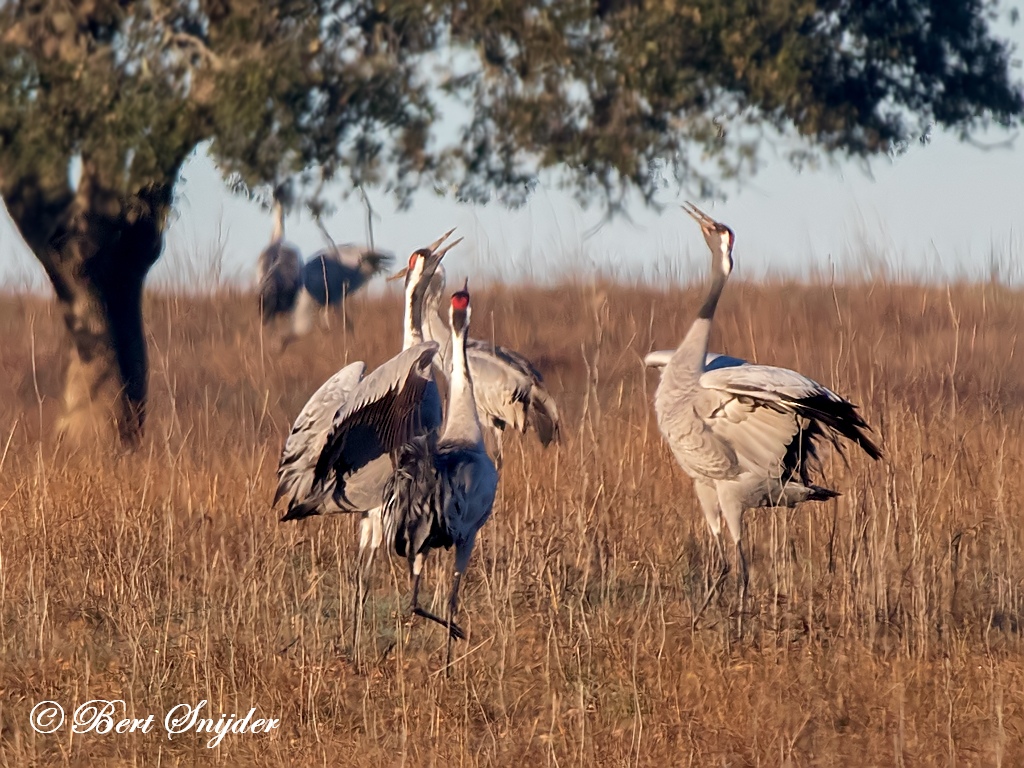
More photos at the bottom of this page:
Most species of cranes are at the least classified as threatened, if not critically endangered, within their range. The plight of the Whooping Cranes of North America inspired some of the first US legislation to protect endangered species.
They are opportunistic feeders that change their diet according to the season and their own nutrient requirements. They eat a range of items from suitably sized small rodents, fish, amphibians, and insects, to grain, berries, and plants.
Cranes construct platform nests in shallow water, and typically lay two eggs at a time. Both parents help to rear the young, which remain with them until the next breeding season.
Some species and populations of cranes migrate over long distances; others do not migrate at all. Cranes are solitary during the breeding season, occurring in pairs, but during the non-breeding season they are gregarious, forming large flocks where their numbers are sufficient.
The cranes are large to very large birds, including the world’s tallest flying bird. They range in size from the Demoiselle Crane, which measures 90 cm (35 in) in length, to the Sarus Crane, which can be up to 176 cm (69 in), although the heaviest is the Red-crowned Crane, which can weigh 12 kg (26 lb) prior to migrating. They are long-legged and long-necked birds with streamlined bodies and large rounded wings. The males and females do not vary in external appearance, but on average males tend to be slightly larger than females.
The plumage of the cranes varies by habitat. Species inhabiting vast open wetlands tend to have more white in the plumage than do species that inhabit smaller wetlands or forested habitats, which tend to be more grey. These white species are also generally larger. The smaller size and colour of the forest species is thought to help them maintain a less conspicuous profile while nesting; two of these species (the Common and Sandhill Cranes) also daub their feathers with mud to further hide while nesting. Most species of crane have some areas of bare skin on the face, the only two exceptions are the Blue and Demoiselle Cranes. This skin is used in communication with other cranes, and can be expanded by contracting and relaxing muscles, and change the intensity of colour. Feathers on the head can be moved and erected in the Blue, Wattled and Demoiselle Cranes for signalling as well. Also important to communication is the position and length of the trachea. In the two crowned-cranes the trachea is shorter and only slightly impressed upon the bone of the sternum, whereas the trachea of the other species is longer and penetrates the sternum. In some species the entire sternum is fused to the bony plates of the trachea, and this helps amplify the crane’s calls, allowing them to carry for several kilometres.
The cranes have a cosmopolitan distribution, occurring across most of the world continents. They are absent from Antarctica and, mysteriously, South America. East Asia is the centre of crane diversity, with eight species, followed by Africa, which holds five resident species and wintering populations of a sixth. Australia, Europe and North America have two species. Of the four genera of crane, two, Balearica (two species) and Bugeranus (one species) are entirely restricted to Africa, and the third Anthropoides has one entirely African species and one species that is found in Africa, Asia and Europe. The remaining genus, Grus, contains the most species and is the most widespread genus, although only a single species occurs in Africa as a wintering migrant.
Most species of crane are dependent on wetlands and require large areas of open space. Most species of crane nest in shallow wetlands. Some species nest in wetlands but move their chicks up onto grasslands to feed (while returning to wetlands at night), whereas others remain in wetlands for the entirety of the breeding season. Even the two species of Anthropoides crane, which may nest and feed in grasslands (or even arid grasslands or deserts) require wetlands for roosting in during the night. The only two species that do not always roost in wetlands are the two African crowned-cranes (Balearica), which are the only cranes to roost in trees.
Some crane species are sedentary, remaining in the same area throughout the year, others are highly migratory, travelling thousands of kilometres each year from their breeding sites. A few species have both migratory and sedentary populations.
The cranes are diurnal birds that vary in their sociality by season. During the breeding season they are territorial and usually remain on their territory all the time. In contrast in the non-breeding season they tend to be gregarious, forming large flocks to roost, socialise and in some species feed. Species that feed on predominately on vegetable matter in the non-breeding season feed in flocks to do so, whereas those that feed on animals will usually feed in family groups, joining flocks only during resting periods, or in preparation for travel during migration. Large aggregations of cranes are important for safety when resting and also as places for young unmated birds to meet others.
Cranes are highly vocal and have a large vocabulary of specialized calls. The vocabulary begins soon after hatching with low, purring contact calls for maintaining contact with their parents, as well as food begging calls. Other calls used as chicks include alarm calls and “flight intention” calls, both of which are maintained into adulthood. The cranes’ duett calls are most impressive.
The cranes as a family consume a wide range of food, ranging from animal to plant matter. When feeding on land they consume seeds, leaves, nuts and acorns, berries, fruit, insects, worms, snails, small reptiles, mammals and birds. In wetlands roots, rhizomes, tubers and other parts of emergent plants, other molluscs, small fish and amphibians are also consumed as well. The exact composition of the diet varies by location, season and availability. Within the wide range of items consumed there are some patterns; the shorter-billed species usually feed in drier uplands while the longer-billed species feed in wetlands.
Cranes employ different foraging techniques for different food types. Tubers and rhizomes are dug for and a crane digging for them will remain in place for some time digging and then expanding a hole to find them. In contrast both to this and the stationary wait and watch hunting methods employed by many herons, they forage for insects and animal prey by slowly moving forwards with their heads lowered and probing with their bills.
Where more than one species of crane exists in a locality, each species will adopt separate niches in order to minimise competition and niche overlap. At one important lake in Jiangxi Province in China the Siberian Cranes feed on the mudlfats and in shallow water, the White-naped Cranes on the wetland borders, the Hooded Cranes on sedge meadows and the last two species also feed on the agricultural fields along with the Common Cranes.
Cranes are perennially monogamous breeders, establishing long-term pair bonds that may last the lifetime of the birds. Pair bonds begin to form in the second or third years of life, but it may be several years before the first successful breeding season. Initial breeding attempts often fail, and in many cases newer pair bonds will dissolve (divorce) after unsuccessful breeding attempts. Pairs that are repeatedly successful at breeding will remain together for as long as they continue to do so. In a study of Sandhill Cranes in Florida, seven out of the 22 pairs studied remained together for a 11-year period. Of the pairs that separated 53% were due to the death of one of the pair, 18% due to divorce and the fate of 29% of pairs were unknown. Similar results had been found by acoustic monitoring (sonography / frequency analysis of duett and guard calls) in 3 breeding areas of Common Cranes in Germany over 10 years (Wessling, 2003).
Cranes are territorial and generally seasonal breeders. Seasonality varies both between and within species, dependent on local conditions. Migratory species begin breeding upon reaching their summer breeding grounds, between April and June. The breeding season of tropical species, however, is usually timed to coincide with the wet or monsoon seasons. Territory sizes also vary depending on location. Tropical species can maintain very small territories, for example Sarus Cranes in India can breed on territories as small as one hectare where the area is of sufficient quality and disturbance by humans is minimised. In contrast Red-crowned Crane territories may require 500 hectares, and pairs may defend even larger territories than that, up to several thousand hectares. Territory defence is usually performed by the male. Because of this females are much less likely to retain the territory than males in the event of the death of a partner.
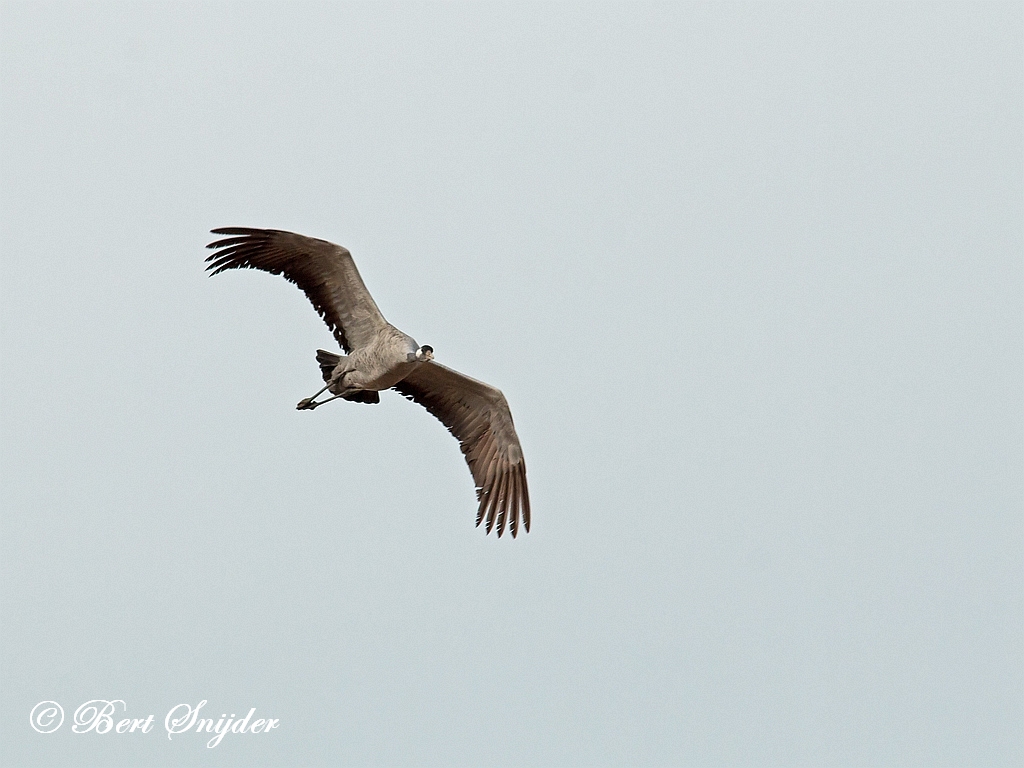
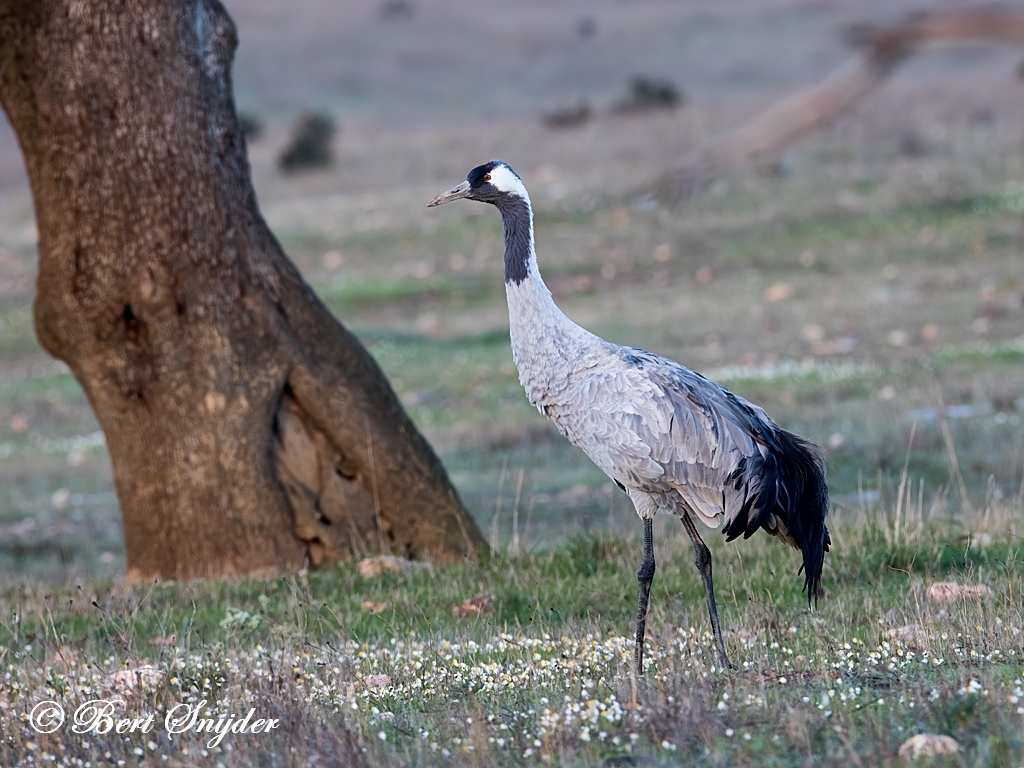
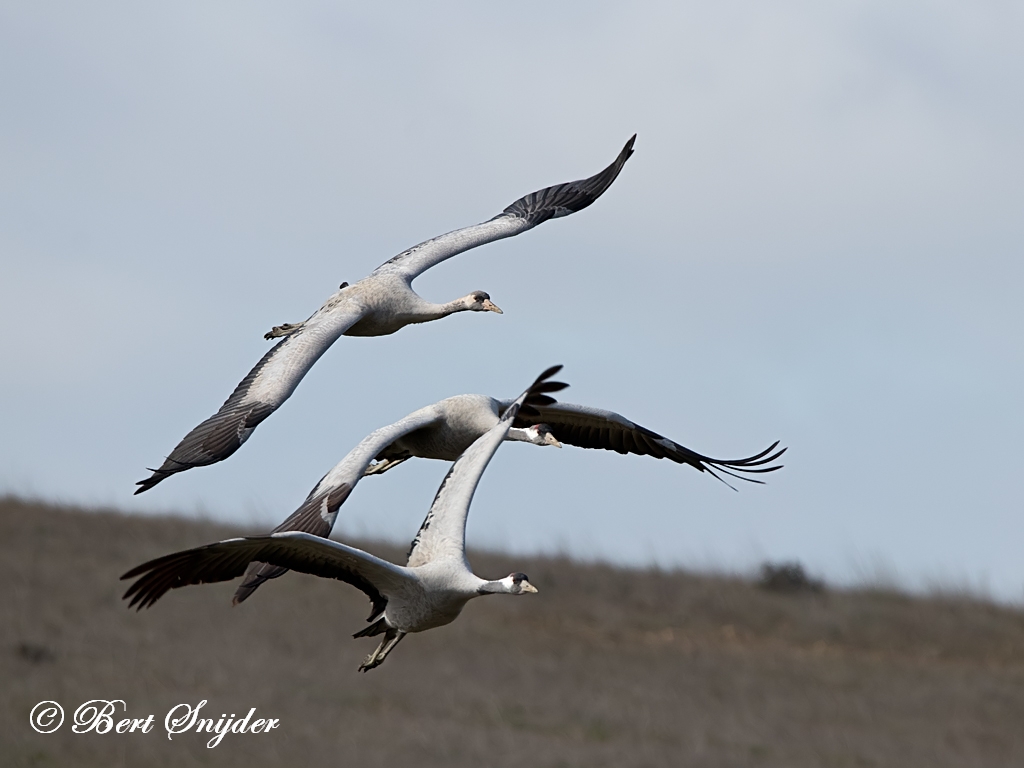
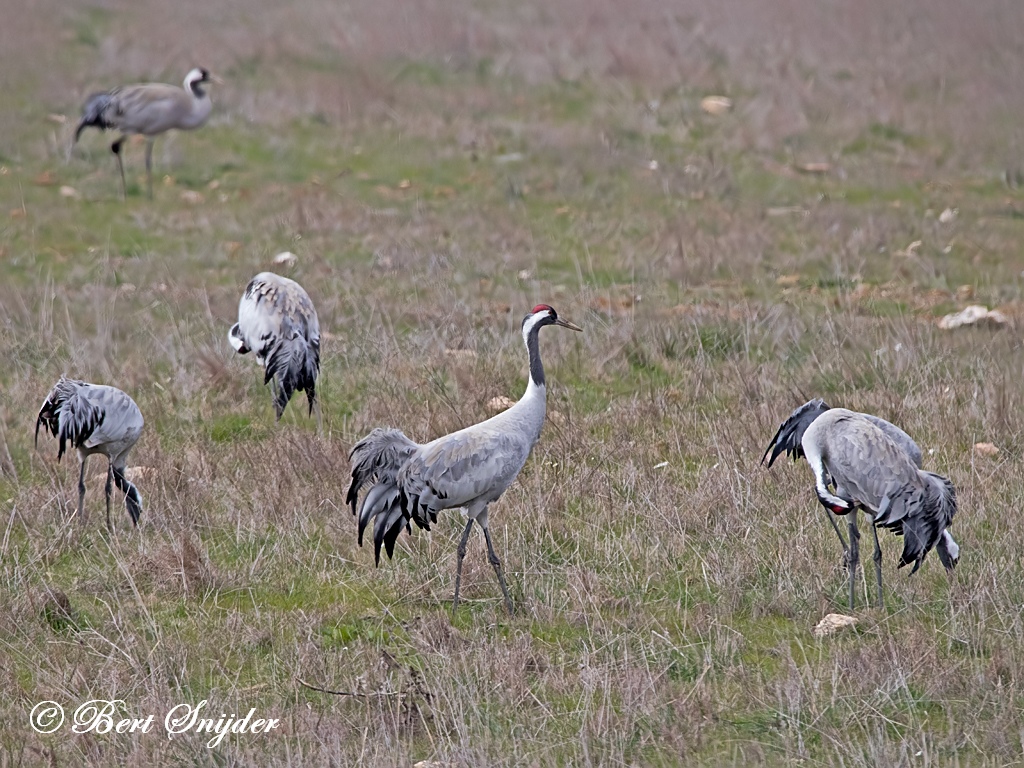
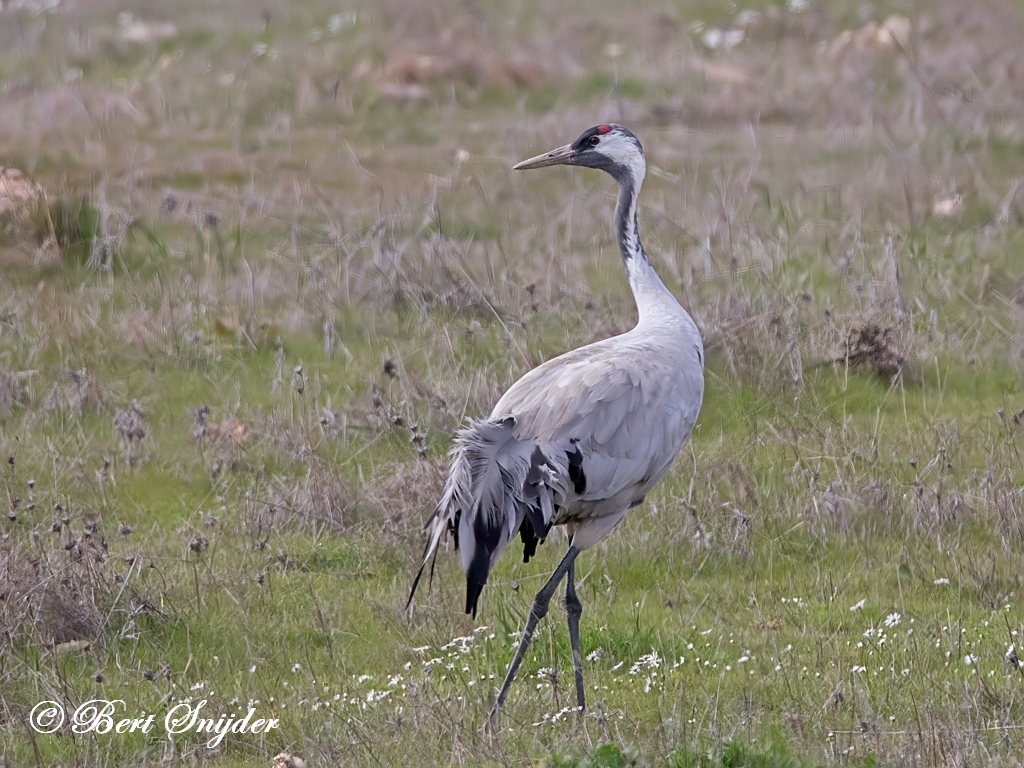
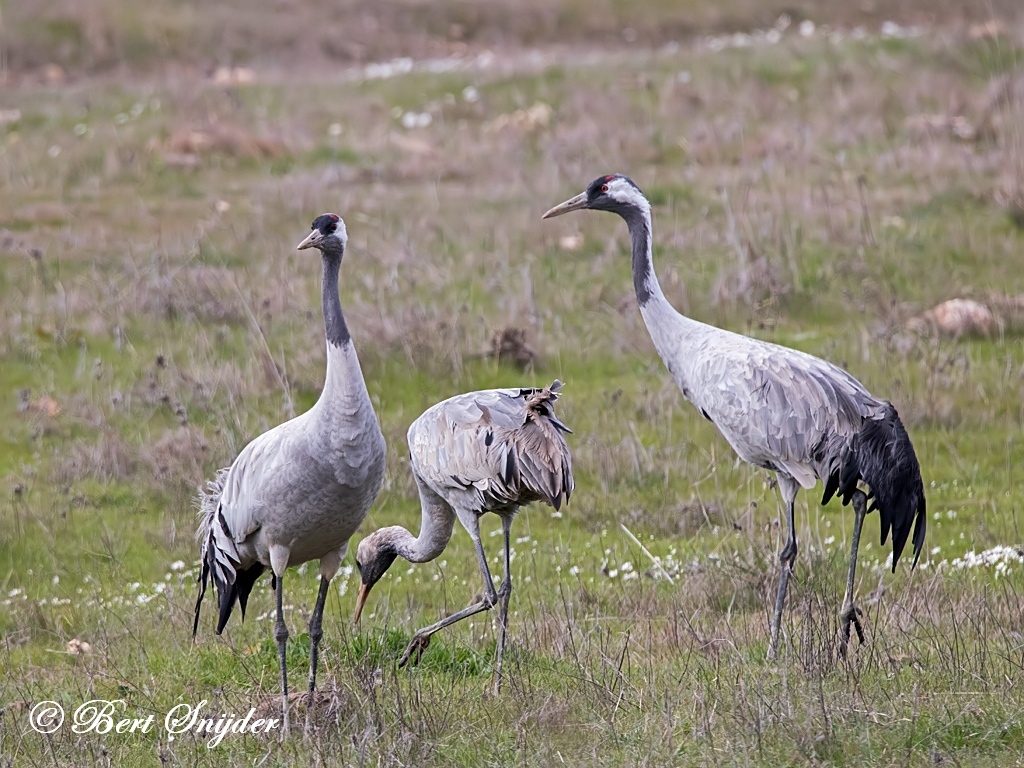
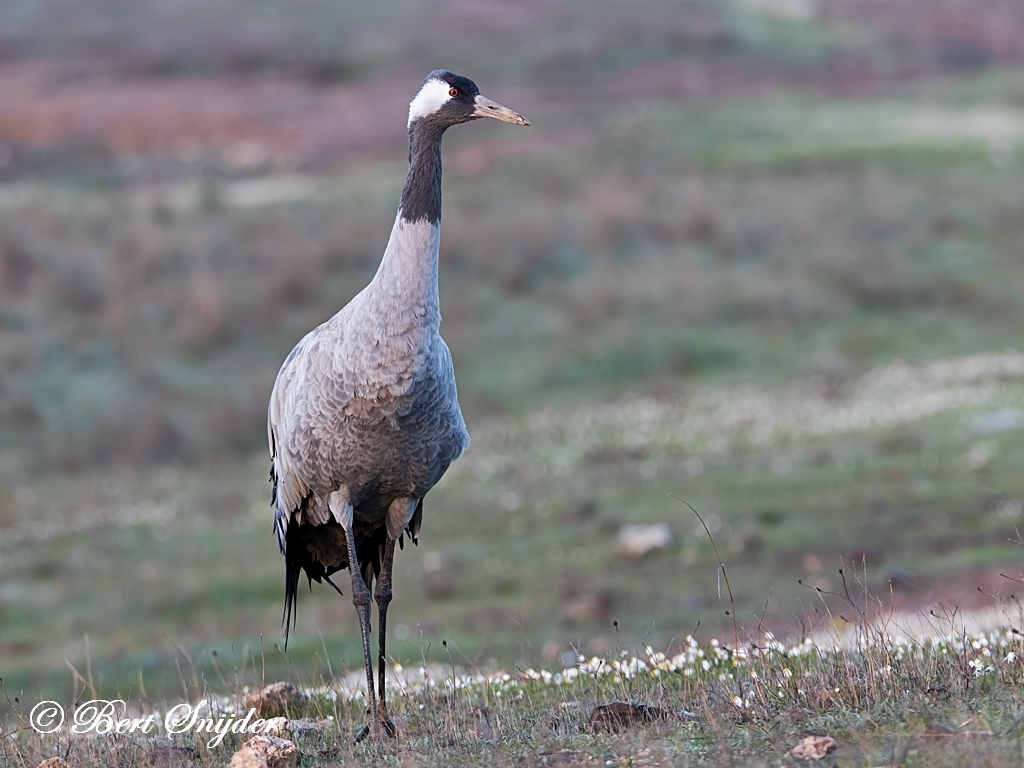
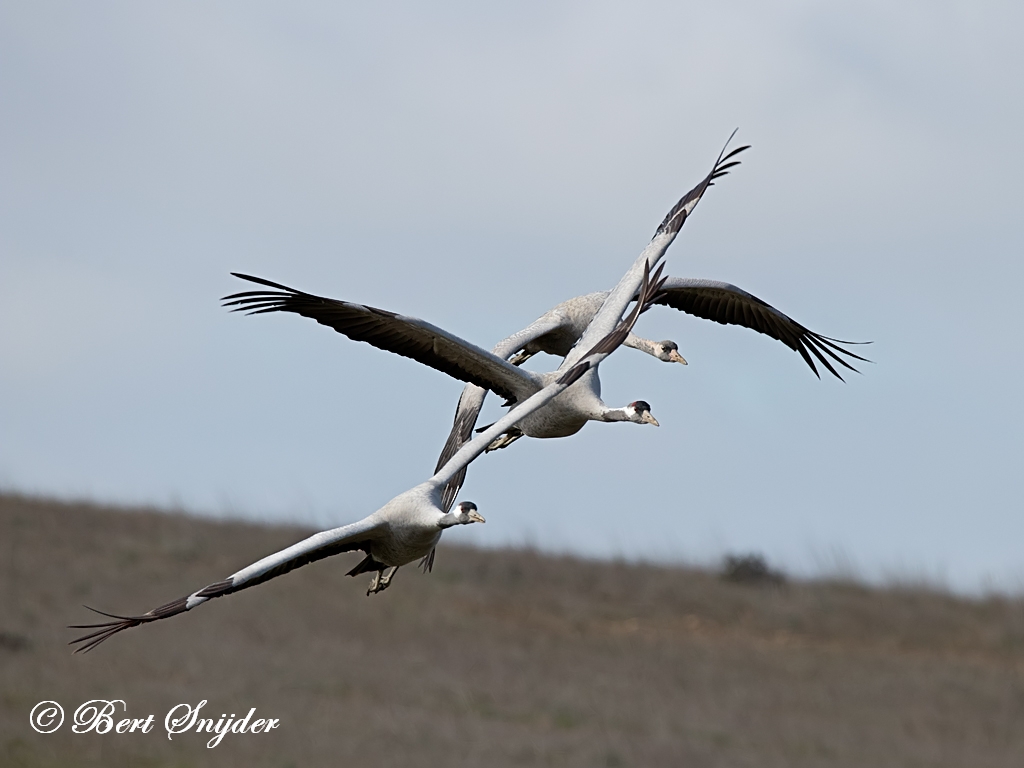
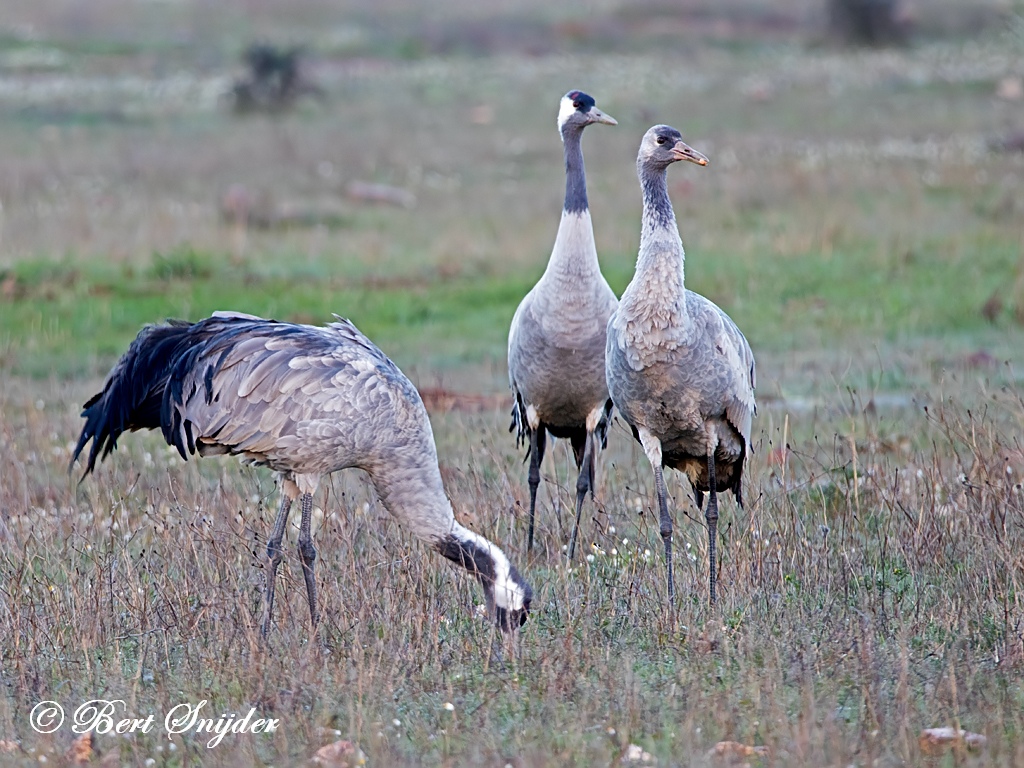
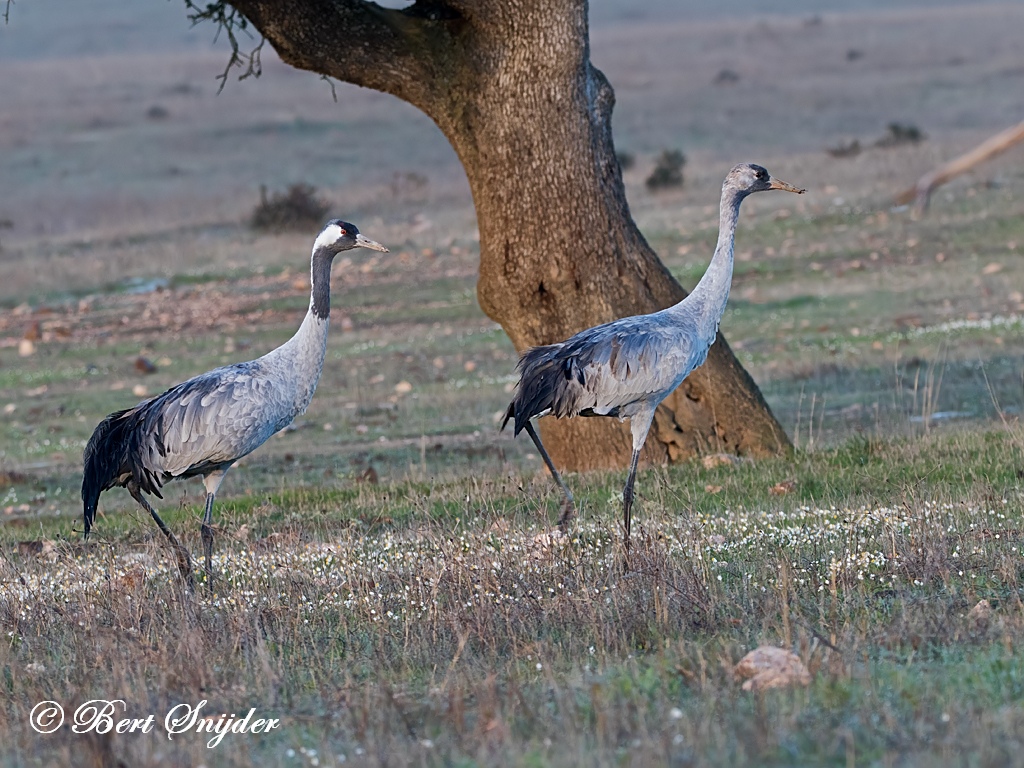


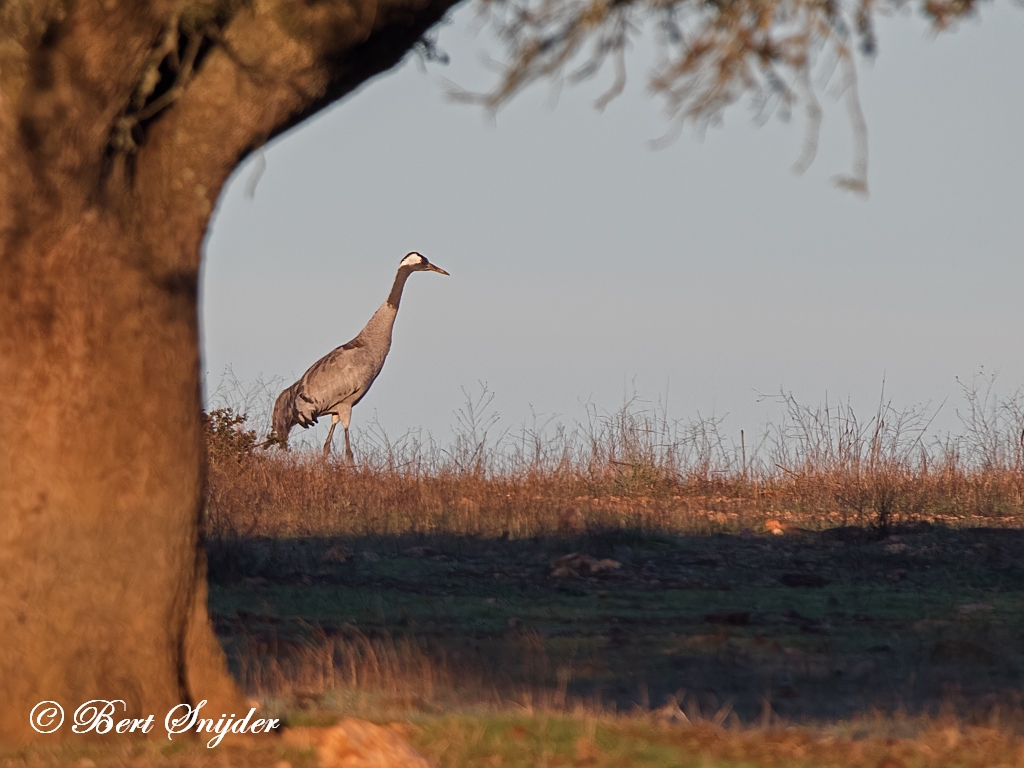
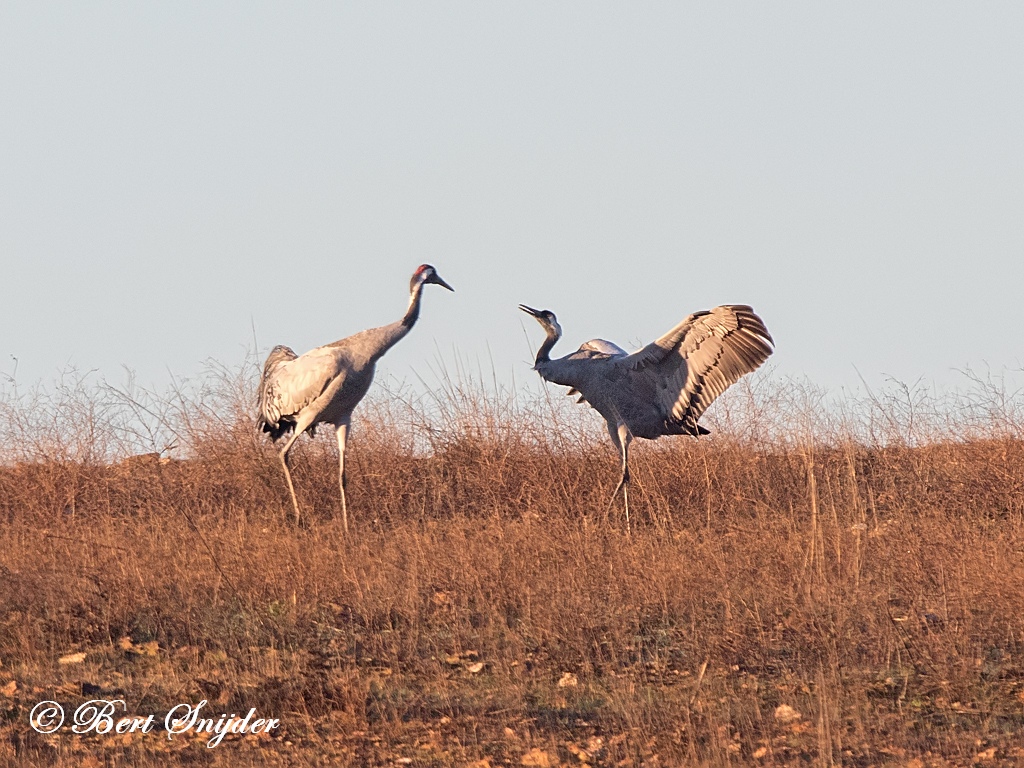

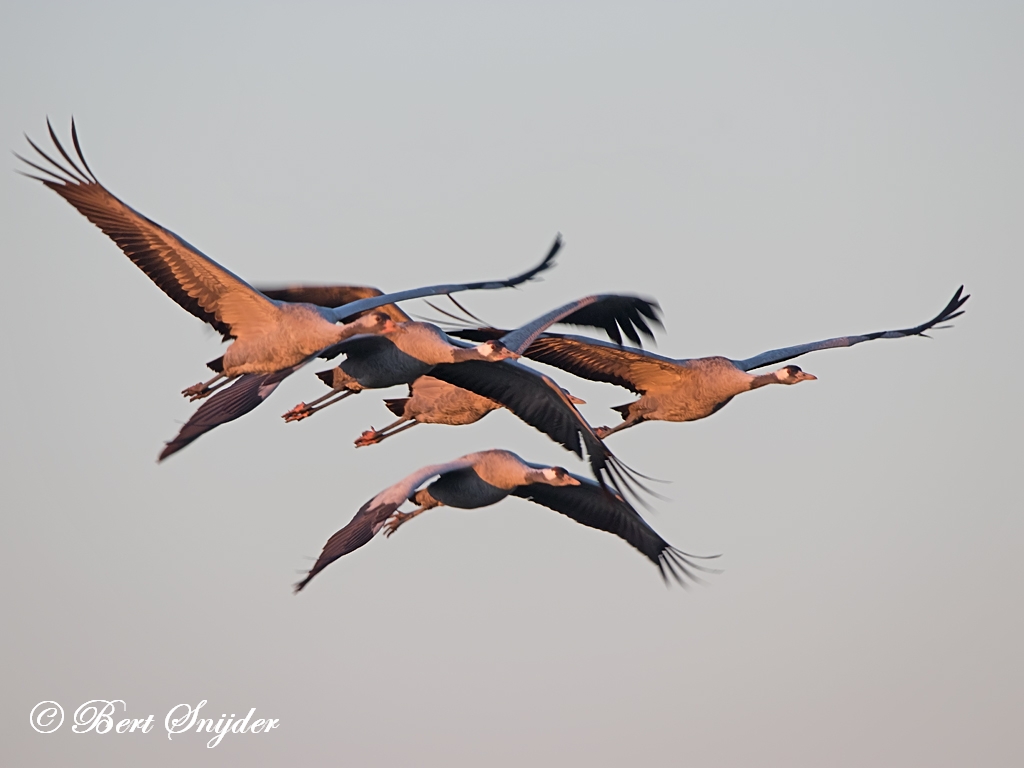
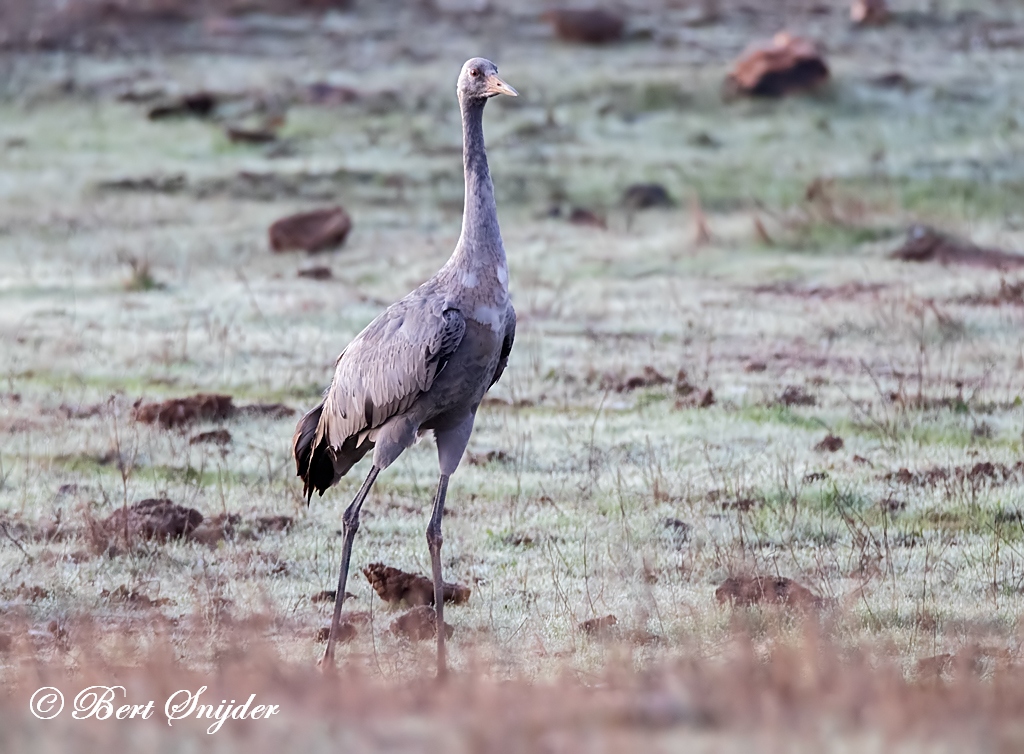
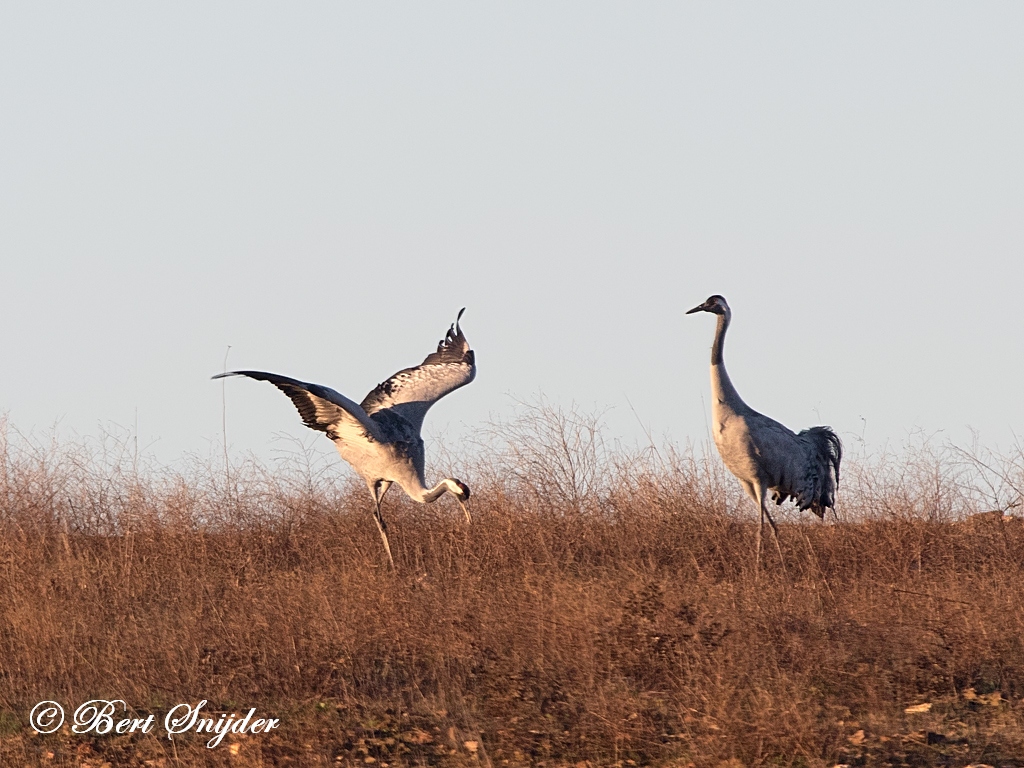
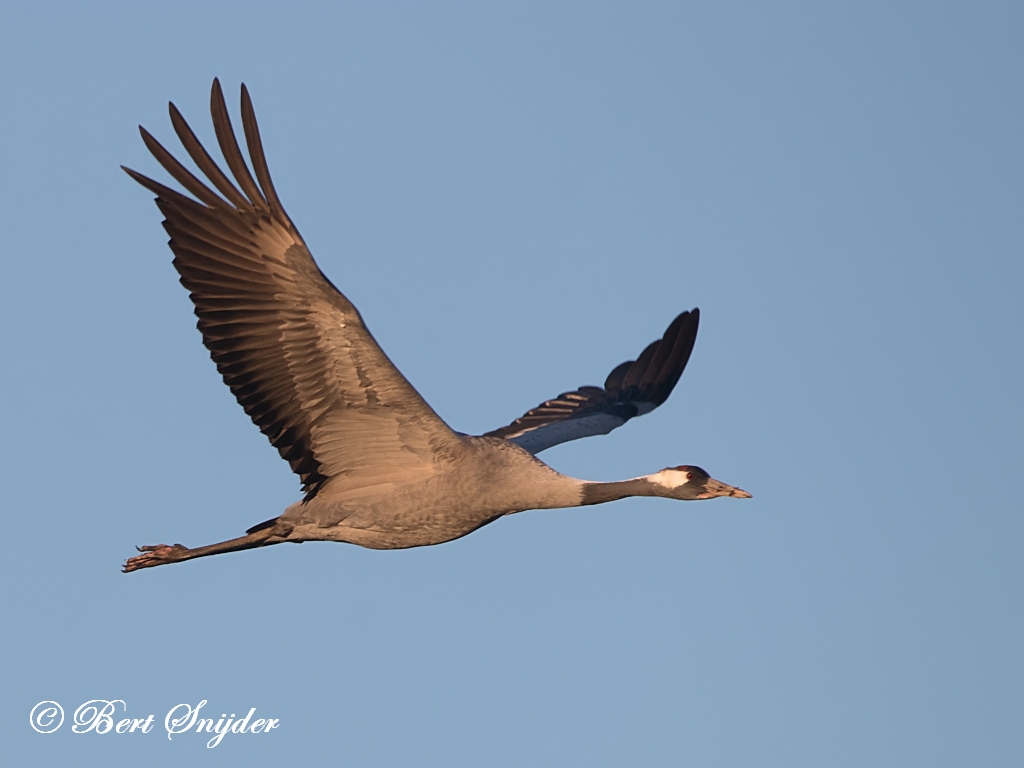
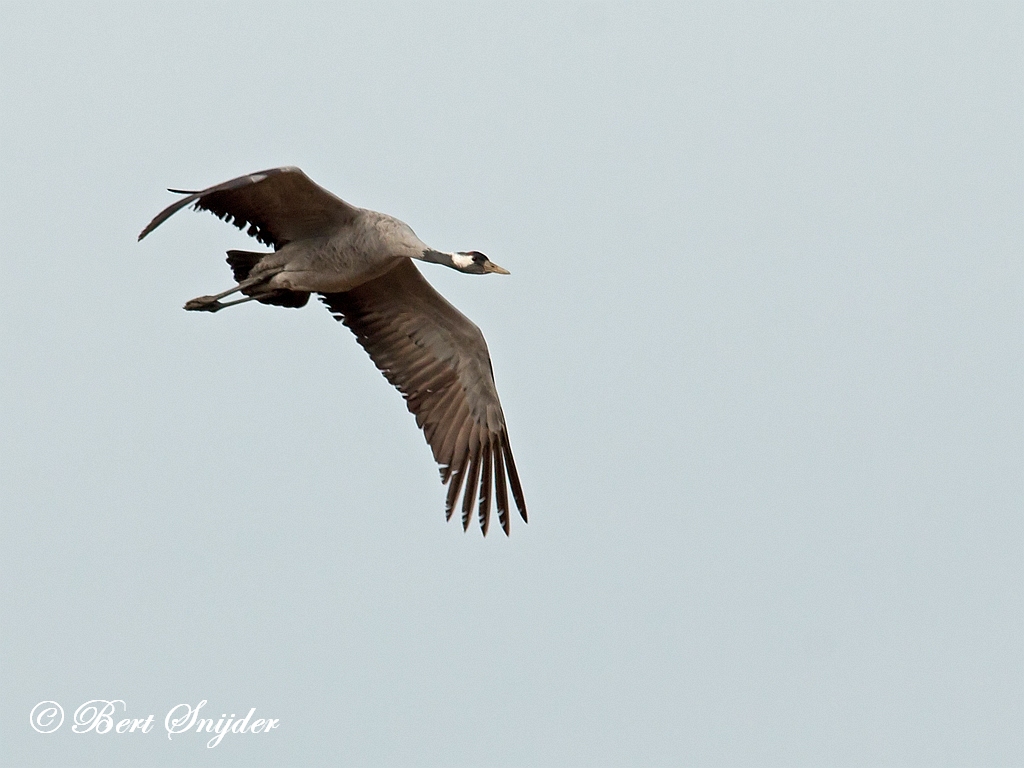

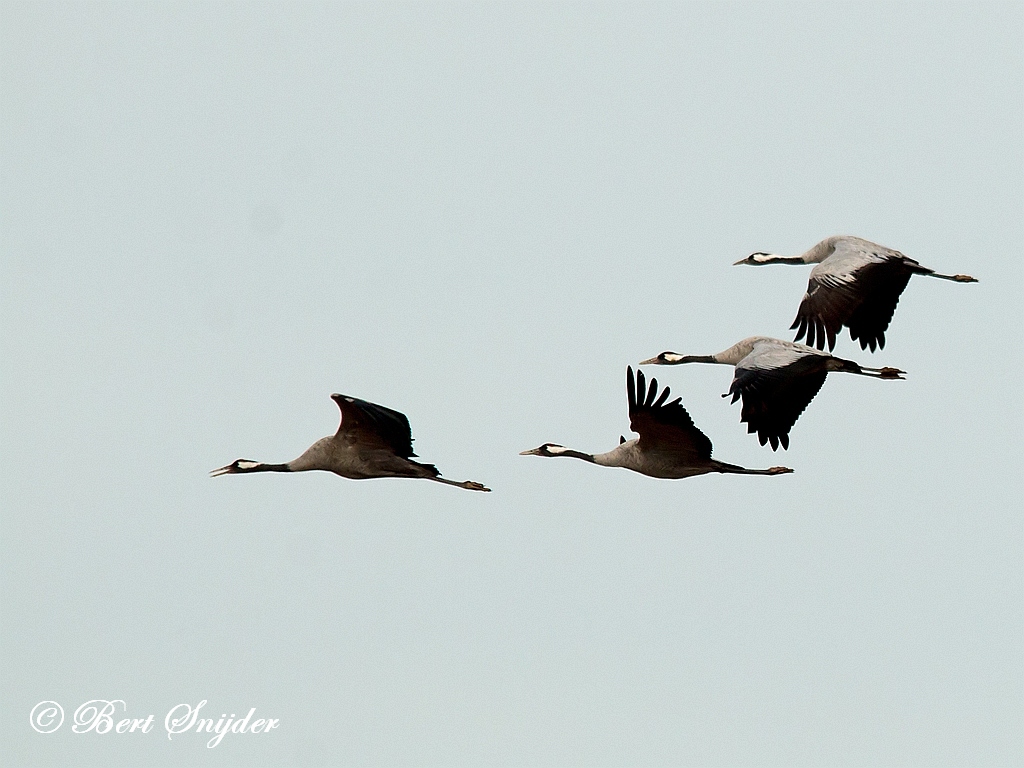
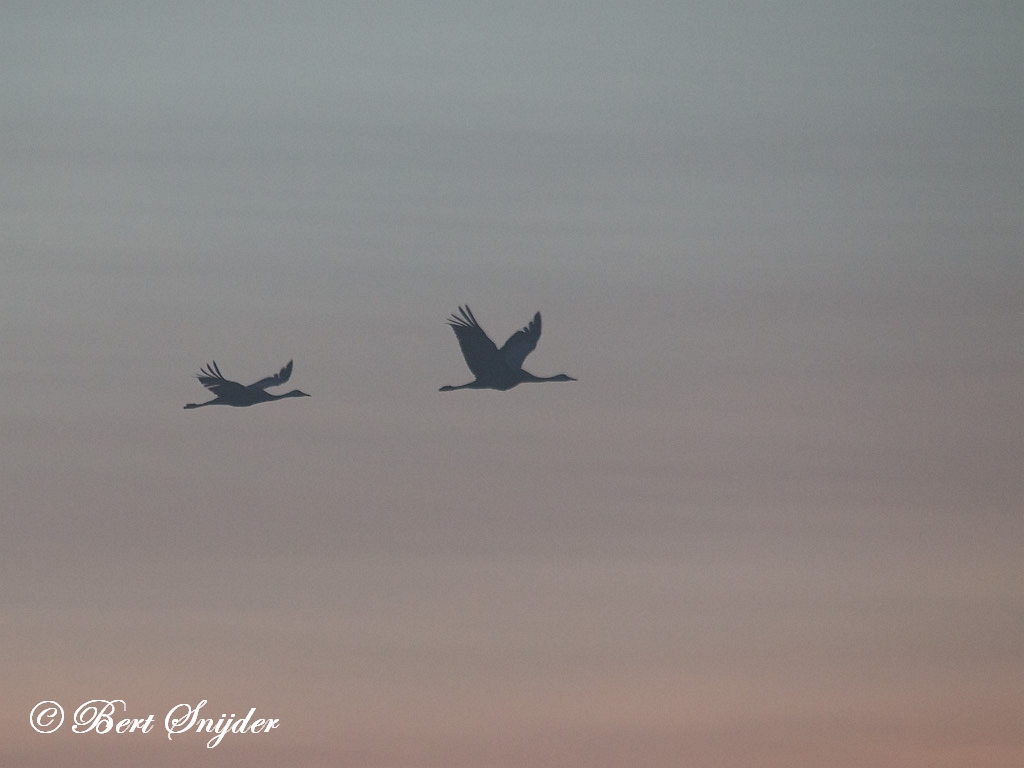
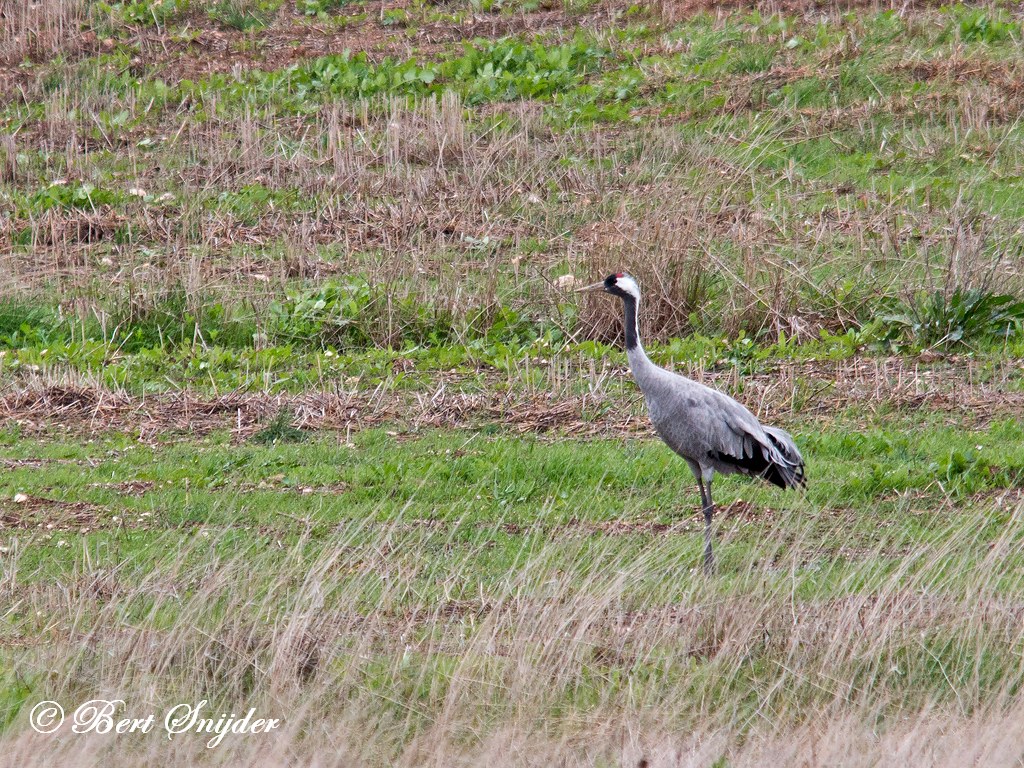

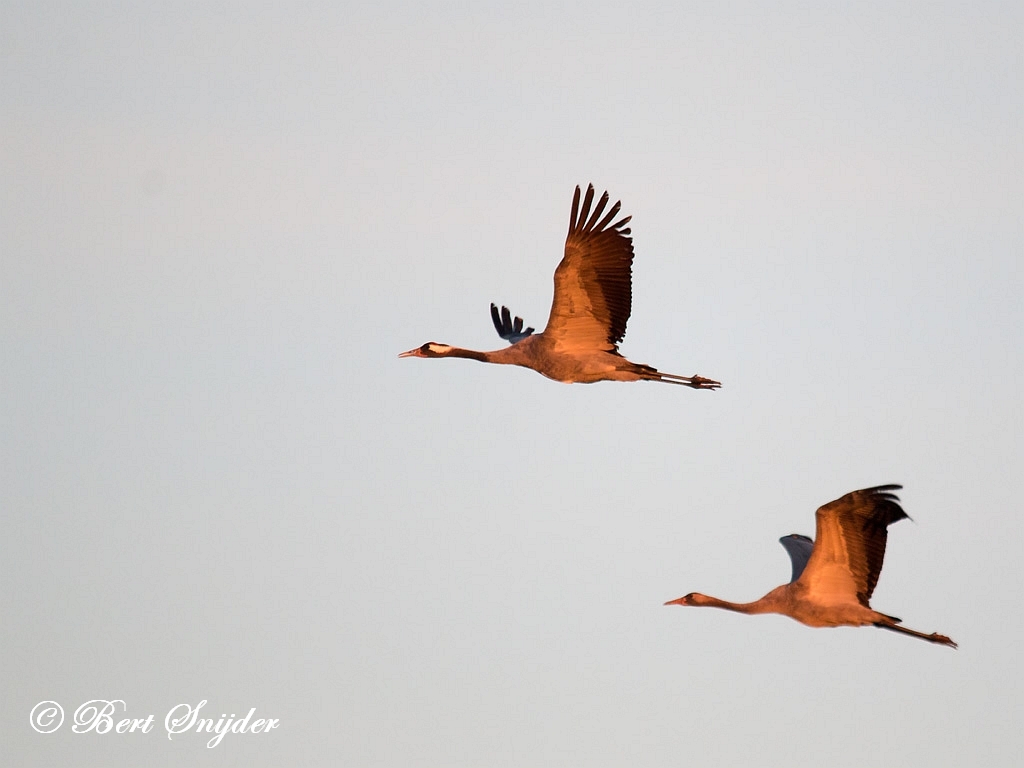
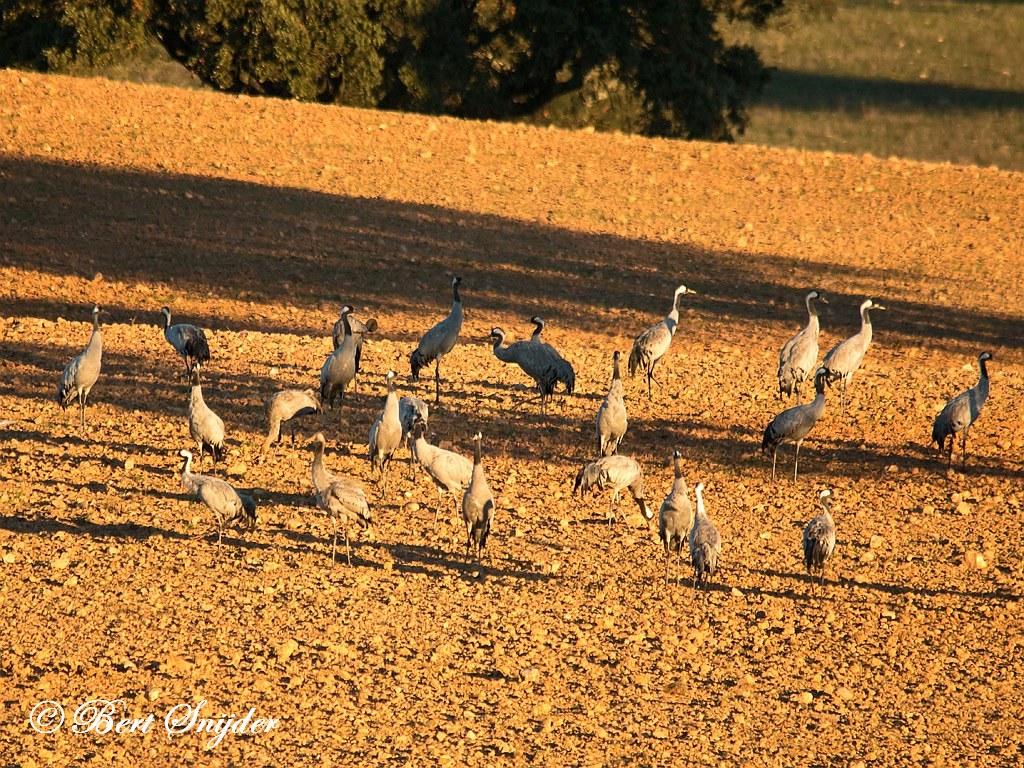
Other synonyms:
Afrikaans: Kraanvoël
Asturian: Grulla
Breton: Ar c’haran louet, Garan
Catalan: Grua, Grua.
Catalan (Balears): Grua, Grua.
Czech: jeøáb popelavý, Jeráb popelavý
Welsh: Garan
Danish: Trane
German: Kranich
English: Common Crane, Crane, Eurasian crane, European Crane, Gray Crane, Grey Crane
Esperanto: Gruo
Spanish: Grulla, Grulla Comun, Grulla Común
Estonian: Sookurg
Basque: Grua, Kurrilo arrunt, Kurrilo arrunta
Finnish: Kurki
Faroese: Trani
French: Grue cendrée
Frisian: Kraan
Irish: Corr mhóna, Grús
Gaelic: Corra Mhonaich
Galician: Grou, Grua
Manx: Coar
Croatian: Sivi ždral, Ždral
Hungarian: Daru
Icelandic: Grátrana
Italian: Gru, Gru cenerina
Japanese: kuroduru, kurozuru, Kuro-zuru, Nezumi-zuru
Cornish: Garan
Latin: Grus grus
Limburgish: Siberische kraan
Maltese: Grawwa
Dutch: Europese Kraanvogel, Kraanvogel
Norwegian: Trane
Polish: zuraw
Portuguese: grou, Grou-comum
Romansh: Gru grisch
Romanian: Cocor
Russian: Sery Zhuravl
Sardinian: Fusellu
Scots: Corra mhonaich
Northern Sami: Goarga
Slovak: Žeriav popolavý
Slovenian: Navadni žerjav, sivi žerjav, žerjav
Albanian: Krilla, Krillë
Serbian: sivi ždral, Ždral
Swedish: Trana
Turkmen: Ak durna
Turkish: Turna
Tatar: Aq turna
Travel Birdwatching Holiday Alentejo, Vacation Portugal for birders to see birds on your trip